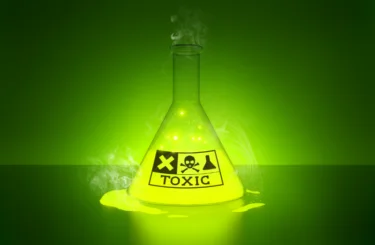Overcoming the Open and Obvious Doctrine in Premises Liability Cases
Under Michigan law, a premises owner may be held liable in a civil action for personal injuries or damages that a victim sustained as a result of dangerous conditions on his or her property. In order to recover, a plaintiff must show that he or she was injured, that the property owner knew or should have reasonably known of the unsafe condition, and that the property owner acted negligently or wrongfully in causing or failing to prevent the injury. At that point, the burden of proof shifts to the property owner to assert why he or she should not be held liable at law for the plaintiff’s damages. One defense to liability is the “open and obvious” doctrine.
What Is the Open and Obvious Doctrine?
In Michigan, one who owns or legally possesses land owes a duty “to undertake reasonable efforts to make its premises reasonably safe for its invitees,” that is, “to exercise reasonable care to protect the invitee from an unreasonable risk of harm caused by a dangerous condition on the land.” However, a premises owner can evade liability for a plaintiff’s injuries if the alleged dangerous condition that caused those injuries was “open and obvious.” A danger is open and obvious if an average user with ordinary intelligence would have been able to discover the danger upon a casual inspection. In other words, the property owner can allege that a plaintiff failed to take ordinary, reasonable care for his or her own safety in the face of an easily discoverable danger in order to absolve himself of legal responsibility.
What Is the Standard for Applying the Open and Obvious Doctrine?
The objective standard for whether a condition is open and obvious is whether “an average user with ordinary intelligence [would] have been able to discover the danger and the risk presented upon casual inspection.” The operative question is whether a “reasonable person” in the plaintiff’s position would have foreseen the danger, not whether the particular plaintiff knew or should have known that the condition was hazardous. The reasonable person standard assumes the general experience of similarly-situated individuals as the plaintiff.
For example, a lifelong Michigan resident suing for damages from a slip-and-fall caused by icy conditions would be assumed to understand that snow and ice occur in winter and can be slippery. As a result, Michigan courts have generally held that the hazards presented by snow, snow-covered ice, and observable ice are open and obvious and do not impose a duty on the premises possessor to warn of or remove the hazard.
This does not mean, however, that a premises owner is absolved of responsibility for hazards that are open and obvious. The owner has a duty to exercise reasonable care to diminish known hazards, including those of ice and snow accumulation (“reasonable measures [must] be taken within a reasonable time after an accumulation of ice and snow to diminish the hazard of injury to the invitee”). A plaintiff may still succeed on a liability claim if he or she can show that a premises owner failed to take reasonable measures to prevent, respond to, or remedy a dangerous condition on the premises.
Are There Exceptions to the Open and Obvious Doctrine?
There are two “special aspects” which can, if present, allow a defendant to be held liable even if the Court finds that the condition which caused the plaintiff’s injuries was open and obvious. The first of these is if the open and obvious condition is “unreasonably dangerous,” that is, one which creates a “uniquely high likelihood of harm or severity of harm if the risk is not avoided.” A pile of dynamite in the parking lot might be an open and obvious hazard, but its clearly dangerous nature would not likely inure a defendant property owner from liability for plaintiffs injured by an explosion.
Alternately, there may be an open and obvious condition that is “effectively unavoidable.” The courts have strictly limited the scope of this exception. For example, they have refused to find that it applies to a plaintiff facing an open an obvious hazard on the way into a building, as he or she could always decline to enter the premises and come back at a later time. However, the court distinguishes this situation from one where a plaintiff is inside a building with no other means of egress besides through an open, obvious hazard. If a plaintiff can show he or she was “effectively trapped” with no other route or safe choice other than to confront the hazard, success may be possible.
Injured in a Slip-and-Fall or Construction Site Injury?
If you are injured in a slip and fall accident or at a construction site, it’s vital to have experienced counsel to help you present your personal injury case as effectively as possible and overcome this and other defenses to liability. Contact the experienced personal injury attorneys at Sommers Schwartz to help you evaluate your claim. Our team of legal professionals will assess your options and help you recover the compensation you deserve for your injuries.
Lisa Esser-Weidenfeller
Lisa Esser-Weidenfeller represents injury victims in personal injury and medical malpractice claims. She also represents individuals in cases against those who have committed horrific acts of sexual assault.





